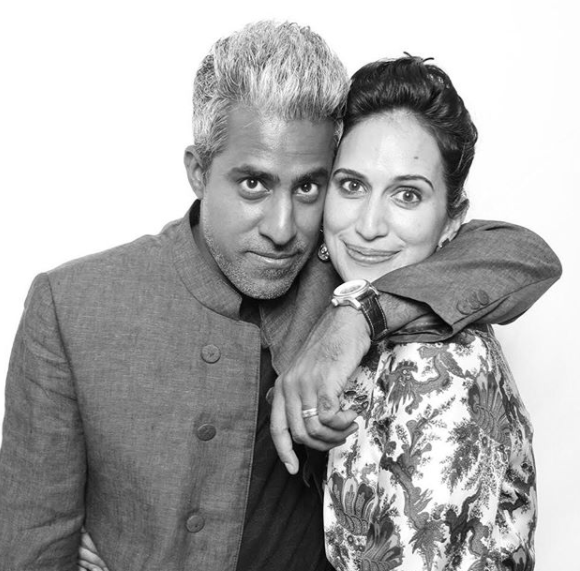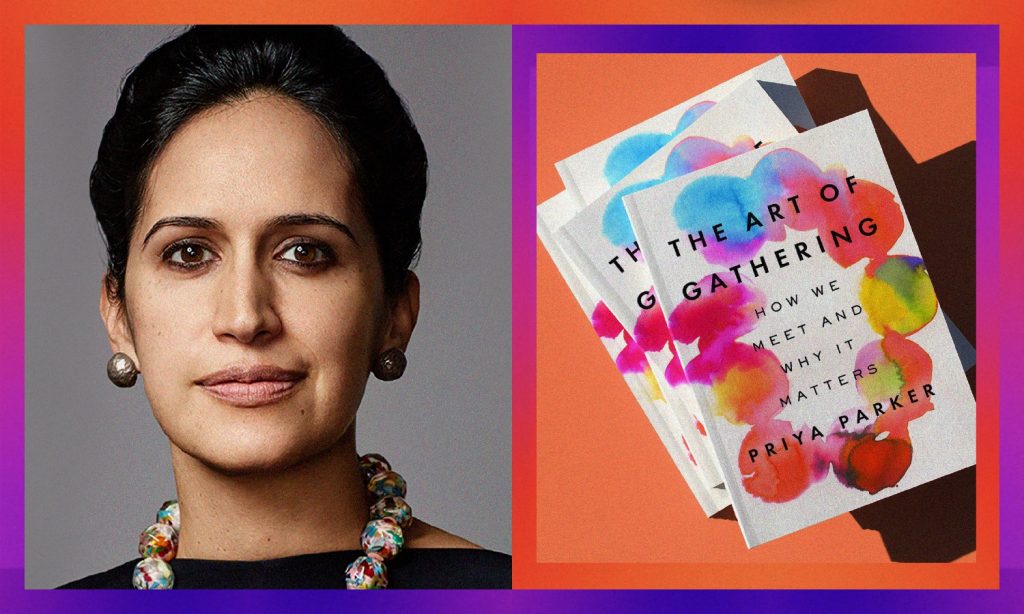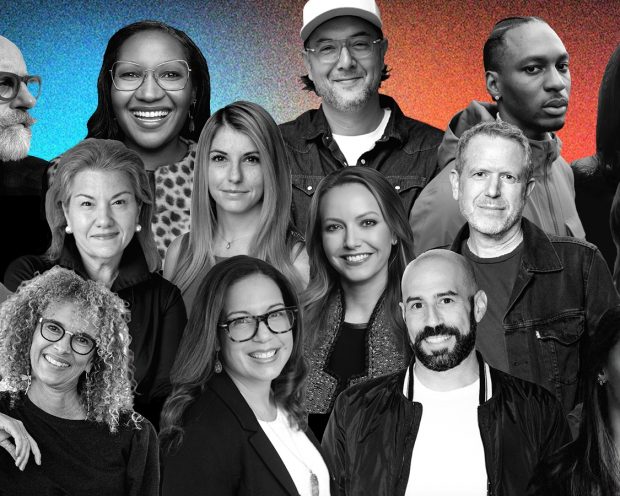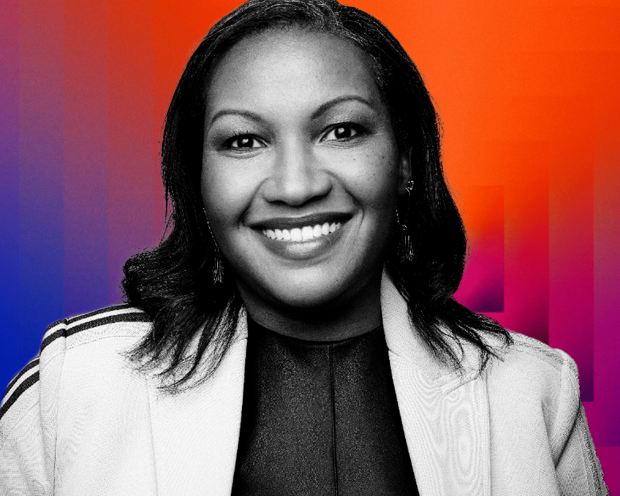At the beginning of Covid, XP Land Erica Boeke and Priya Parker, the author of “The Art of Gathering” and host of the New York Times podcast, “Together Apart,” had a wide-ranging conversation about what it means to “guest,” the ubiquity of Zoom amid the pandemic and how we can all gather better. It brings us all back to a terrifying time, but many of the lessons of great gathering still apply.
First, why do your podcasts make me cry?
Well, I hope because there’s something in the journey or the questions of the characters that relate to what you also are seeking.
We’re always intrigued by where people do their calls and meetings during COVID times. As for you, we’ve heard you mention that sometimes you head to your closet for better sound. Tell us more about where you do your calls and video calls… Like, where are you right now?
Right now I’m doing this call from my kids’ bedroom. I do my podcast calls from a small closet with a lot of towels and comforters around me, in part to get the best sound because we’re not doing this in a studio. We’re doing everything remotely. So it’s this makeshift DIY recording studio made out of towels.
Yeah, it’s funny, sometimes phone calls (and podcasts) can seem more intimate. I’m sure you saw Why Zoom is Terrible. How can we make Zoom less terrible, aside from us all sitting in our closets doing calls?
I mean, at some point get off Zoom. You know, this is a tool that was not created for this moment. We are lucky to have it. But it is sufficing, it is not optimizing. And I think that this is the first time at this level of a global pandemic where the majority of people have access to some type of technology. So, it makes me think of this 14th-century Italian novel called “The Decameron.”
The entire premise of that book is sort of like a different version of the Canterbury Tales, but it’s a plague that hits Florence, and a group of friends leave the city and go into a cave and the entire book is the stories they tell themselves and each other. They speak to each other as they’re waiting out the pandemic. So the upside is that we no longer have to go to a cave to connect!
[Dog barks. An elderly adult shouts up the stairs.]
“If you are asking people to do something, it shouldn’t feel too much like work, or the transaction costs should be worth the payoff of what actually happens during the event.”
A cave sounds kind of nice right now. OK, back to us. At XP Land, we feel that the Times of Corona has brought about the democratization of events. Everyone is now a virtual event planner — from hosting an engaging Zoom meeting or webinar (we hate that word) … to gathering friends and family for a virtual Baby Shower, as discussed in your third podcast. (Yes, I have them all memorized.)
With our audience in mind, what are three tips to help people be better hosts in their virtual lives, whether it’s for a Zoom meeting or a corporate gathering?
- Think deeply about your invitation. How people receive it … is it a calendar invite? Never send a calendar invite that blocks a large amount of time and says TBD. In fact, do the opposite of that. Just as in physical gatherings, virtual gatherings start at the moment of discovery. Which is the guest discovery. So think about what you want to call this thing. I mean, why do we have to call it a webinar? Let’s get creative. You don’t have to match the language of technology, right? It doesn’t have to be a webinar a meeting or a live stream. Is it a barnstorming? Battle of the bands? Dinner party? And these can all be metaphorical, right? For your invitation, think about the language you are using to describe the social contract of this event.
- Have a strong host who is able to navigate through the clunky awkwardness of Zoom or whatever technology you choose. We no longer have “milling around” time where people can connect in non-self-conscious ways in the first few minutes of the meeting because you say something to one person that everybody hears. The role of a host becomes even more important in virtual meetings. Also, Think about how you welcome people as they enter the threshold of the Zoom meeting.
- 3. People are no longer walking through doors … we have been stripped of a lot of the work that physical space does for somebody psychologically when they enter a room or a meeting. What can you control? You can invite people to think about what they do ahead of time, and you can control how they enter the room, and then what they see and experience once they enter.
I had a restaurateur Instagram me a party that he was hosting. He was busy trying to deliver meals in North Carolina, and he wanted to keep his team’s spirits up. He hosted a gathering celebrating the Lao New Year. This is what his invitation said:
Vanvisa and I would like to invite you to our
virtual garden cocktail party
Join us if your calendar allows. 5pm.
Find a spot outside to Zoom in.
Our team will set up the line. Jump in as you like.
Garden cocktail attire.
Everyone must have two cocktails prior to our party.
Ha! That is amazing. And perfectly leads to my next question. First of all, you introduced us to the idea of guest as a verb, which we love, since everything we do as experiential strategists goes back to the UX experience.
You talk in your podcast about how we actually might be asking more of people who are attending now, in order to create a more engaging virtual event for all. How would you suggest we, as experience creators, help get people excited about the prep that goes into being a guest at a virtual event?
Make the prep, fun, meaningful and relevant.
The reason why the two cocktail thing was hilarious is that it was a cocktail party and the brilliance of his insight was that, in this era, he couldn’t provide his guests cocktails. It’s actually kind of arbitrary to start drinking once you enter a room, right? I’m not saying every person should have two cocktails before a business meeting. But in his case, he created something that was actually fun, and it created anticipation. If you are asking people to do something, it shouldn’t feel too much like work, or the transaction costs should be worth the payoff of what actually happens during the event.
Absolutely. So that brings up a good point. We work a lot with consumer brands, rather than individuals or small businesses. And to many of us, marketing, when not done well, can feel kind of icky right now. Any tips to help our clients create meaningful gatherings during these times?

What is a brand? A brand is the deepest promise that you want to offer to your consumer. And this is a moment in time when internally you need to actually ask, “What is our deepest promise?” Is our deepest promise to sell a product? To create comfort? To help our local economy? Or to create a moment of escape? And I actually think at the deepest level, for marketers, it’s an opportunity to go back to ask this question. And in this context, that deepest promise might mean destroying market value.
We totally agree. We come from an editorial background, and we try to encourage our clients to ask “What’s your editorial voice? What is your true mission?” It all starts with that, right?
I saw an interesting Twitter campaign by Jose Cuervo leading up to Cinco De Mayo. It says, “Jose Cuervo will pick up the tab on thousands of to-go orders when you order food from a local independent Mexican restaurant. Tweet us the receipt with cincotogo.” I thought that was really interesting.
If you look at the brand, they are not saying “buy us.” They are saying “Go to a local independent Mexican restaurant and we will then pay for that meal.” Yes, it’s sponsored by a tequila brand … I thought that was a really interesting example of somebody at a company thinking about how to create a meaningful experience and not leading back to buying the product directly.
And how about tips on making a really large event more engaging and meaningful for the audience? (We recently attended a virtual event that reached 45,000 people!)
I think a host at all gatherings — and particularly in virtual gatherings — should be practicing what I call “generous authority.” That means thinking about the good of the group, protecting their experience, and protecting the gathering purpose. So then you do three things:
- Connect guests to the purpose. In the first opening moments, don’t start with logistics, but actually tell people why they’re there … the deepest promise of why they’re there. Start with a story.
- Protect the guests from each other. Protect them from the interrupter (or the man-terrupter, a new term.)
- Temporarily equalize. Whether it’s 15,000 or 50,000 people, these experiences can seem pretty anonymous. With this many people, it can only be a spectacle or only be a performance. Find a way to creatively connect people to each other. And that could be some form of collective ritual where everybody’s doing the same motion.
This could be a moment where all of a sudden you turn on the gallery, and actually see these images of people (who have texted in their images), or you go just very old school. (Like everyone takes a sip from their coffee mug for our Creative Mornings session.) Something so you psychologically know everybody’s doing the same thing at the same time. But it shouldn’t be arbitrary. Every action — and that’s what a ritual is, at some level — every action should relate back to the purpose and take people through the arc of a journey.
Another thing to play with, in regards to these large groups, is that every gathering should have some level of risk. So the larger the gathering, the more afraid of it we are.
One of the examples that I love is from the 2016 election. Moveon.org held a conference called the Monday after the election, and for their politics, everybody was, frankly, grieving. And 60,000 people called in (I wasn’t on it, but when you write a book called “The Art of Gathering” people send you all sorts of examples.) As an organizer of a meeting like that, most people would think, “Oh my god, I have to keep the mute button the whole time, or it’s going to be total chaos.” But the organizer actually said, “There are 60,000 people on this call and I am going to do something crazy in a moment, which is take the mute button off. And then I want you all to yell one giant ‘YAH’’ into the phone.”
So they took this mute button off and the person who recounted this experience to me said, “They achieved their purpose in those 60 seconds. It didn’t matter what they did in the next 59 minutes. I knew in that moment, screaming in my living room, that I was not alone.”
So, you know, we’ve been fascinated with this consumer behavior that seemingly changed overnight, the fact that these work platforms are seeping into personal, personal seeping into work. And of course, we’re all worried about screen fatigue. But say that we’re on the other side of this terrible pandemic in 18 months? Do you see a world where you think behaviors change forever? What will we take with us and what will we maybe leave behind?
I think we will take with us a re-evaluation of — systemically through our organizations — which gatherings can be open to the public and done virtually. I think core questions in the public sphere will emerge, like, will the Supreme Court continue opening the hearings to the public, via live stream? Organizationally, these four questions are some of the core issues for institutions that will come out of this period:
- Rather than asking which of our gatherings should be live-streamed to the public, perhaps we should instead ask which of our gatherings shouldn’t.
- How might we develop a set of core gathering principles that help us determine what merits a live stream?
- Are there gatherings that purposefully create a sense of belonging for our community and should be maintained to keep an intentional sense of differentiation? Which ones? And who do we consider our community to be?
- There is a huge spectrum between not live streaming anything and having everything be open to the public. What does thoughtful participation look like for us in this new world??
This has been a moment of rapid adoption. Most technologies go through a cycle of adoption. So I would be curious to see the rates of adoption of Zoom compared to any other technology like it over the past 20 years, like because of the forced adoption.
It can take years and years to get a grandparent onto an app, and because of Passover this year, all of a sudden, something’s important enough, and it’s the only way you can actually access your family. And the rabbis in Israel allowed Seders for the first time through Zoom. So you suddenly had rapid adoption of technologies that otherwise these communities wouldn’t be a part of.

On the personal side — and I really hope this continues — this is expanding the boundaries of who you spend time with. And not making assumptions that you can’t have meaningful connections with those in the same geographical space as you. I hosted an 80th birthday party this weekend. It was interrupted by Corona. We were just going to have three families in a house over a weekend to celebrate my stepfather, and it ended up being 50 people online — college friends, siblings, people in five different countries, and this is becoming a familiar story. And it was actually amazing to think “Wow, when you don’t have to get into a car or get onto an airplane — the transaction costs of inviting people go down, but also when you can’t be together the creativity of who could be involved goes up.”
What went into the planning of that newly re-invented gathering?
As we started to pick up the pieces, we designed the full day, and fortunately it fell on a Saturday… We started with Ginger Cookie Baking with grandkids from 2 to 16 years old at 10am — and the thought there was how to do an activity because it’s not going to be a conversation. So we all got a simple recipe where everyone had access to those ingredients, and we baked together at 10am, and then from 4 to 5:30pm, we did a virtual Zoom cocktail happy hour.
People wore hats, and they were from all of the different parts of his life, different countries that he has friends and family in — and my mother virtually emceed this hilarious collective poem and metaphor-making about him and used breakout rooms.
Then that evening — it’s a joint family — we had a progressive dinner party because everybody has kids and it’s complicated to talk over each other.
So we started together and did a little moment of silence, which is a tradition that he has from his traditional birthday dinner. We all held hands, which you could see on the screens, and then he did a digital progressive dinner: He had appetizers with one daughter and her family … the main with another daughter and her family … and dessert with me and my family. And then we all got back on for cake, candles, toast, and then an amazing tribute video. We did the event mostly on Zoom, but we did FaceTime for the baking.

Can’t wait to hear what you’re up to next. We’re also big fans of your husband Anand Giridharadas and his book, “Winners Take All.” What is next for you and what’s next for your husband?
We’re going to take a nap.
Thank you, Priya, for your generosity of time — and spirit.
*****
Check out Priya’s “Together Apart” podcast, her book “The Art of Gathering,” sign up for her newsletter and follow her on Insta and Twitter.
This interview was originally published on the Liberty & Co. blog, Love, Liberty, in May 2020. Liberty & Co. is the parent company of XP Land.
Join us in XP Land. A community for experiential creatives and experience-makers, brand leaders and IP-owners, space stewards and venue visionaries — all of those in the business of epic gatherings and live, immersive storytelling.



